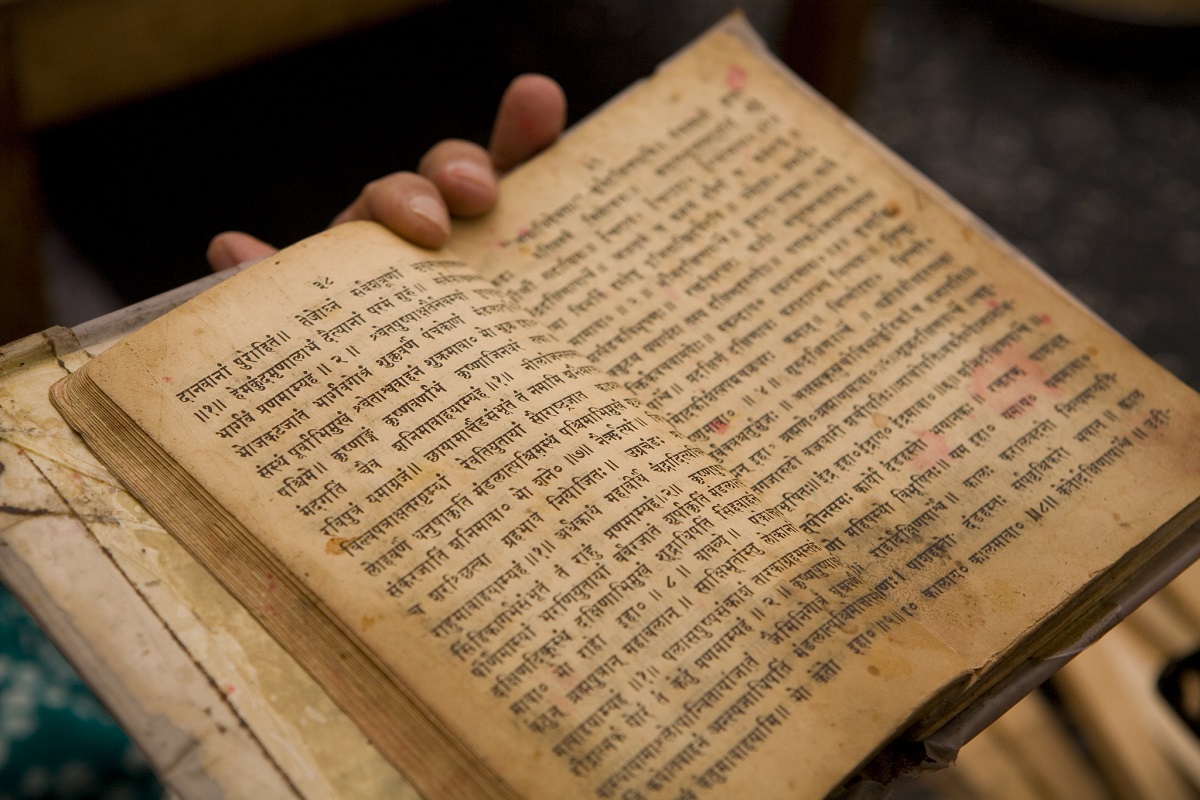The Vedas are a large collection of ancient Indian texts which are considered to be sacred scripture within the Hindu religion. They are composed in Vedic Sanskrit, and are not only the oldest known Hindu texts but the oldest known texts of any Indo-Aryan language.
The Vedas are believed to have been directly revealed to the ancient rishis, or seers, who orally preserved and handed them down thereafter. The word “Vedas” comes from the Sanskrit word “vid,” which means “knowledge.” Interestingly, “vid” is also related to the English word “wit.”
Different Vedas
There are four different Vedas, and they are known as the Rigveda, the Samaveda, the Yajurveda, and the Atharaveda. The Rigveda is the oldest of the Vedas, and it contains 1028 hymns for use during ritual sacrifices. The hymns and prayers offer praises to the gods and invoke them for health and prosperity.
The Sama and Yajur Vedas also contain hymns and invocations, expanding on and offering interpretations of the rituals of the Rigveda. Unlike the other three, the Atharaveda is not so concerned with ritual. Instead, it focuses on providing spells and incantations that are meant to bring about health, wealth, or any number of things that one may be seeking.
Vedas sections
Each Veda is further divided into four different sections: the Samhitas, Brahmanas, Aranyakas, and Upanishads. The Samhitas are the hymns and chants which are used so prominently in the first three Vedas and to a lesser extent in the fourth.
Brahmanas provide the reader, or as it was in the past, the listener, with a commentary on the proper performance of these hymns. The Aranyakas also provide commentary on the Samhitas, but they are more focused on the meaning of the hymns.
Finally, the Upanishads are a collection of deeply philosophical texts. They are much less focused on ritual and more concerned with the ultimate nature of reality and the soul.
Vedic recitation
The belief in the power and necessity of the spoken word for Vedic recitation cannot be overstated. These texts were orally transmitted for thousands of years.
Incredibly, scholars believe that this was an extremely accurate oral tradition precisely because of the power, and even sacredness, attributed to the words of the Vedas. It was crucial to the proper functioning of a ritual to pronounce every word exactly as it was meant to be pronounced.
Those who memorized and passed the Vedas on did so using a series of hand gestures accompanied by rhythmic chanting. This made it very clear if any section of the oral text was left out.
More: Mindfulness Meditation and the State of Flux as Ways to Increase Well-Being
The Vedas are incredible and ancient texts of poetic, philosophical, and religious value. Their composition dates back to around 1500 BC. They are used by various schools of thought and many traditions within India to this day.
The Vedas are perhaps one of the few common threads running through what is known as “Hinduism.” Hinduism is a large and diverse religion, so diverse that at times certain smaller traditions within it seem nothing alike. Nevertheless, most traditions within Hinduism consider the Vedas to be a divinely revealed collection of sacred texts.







